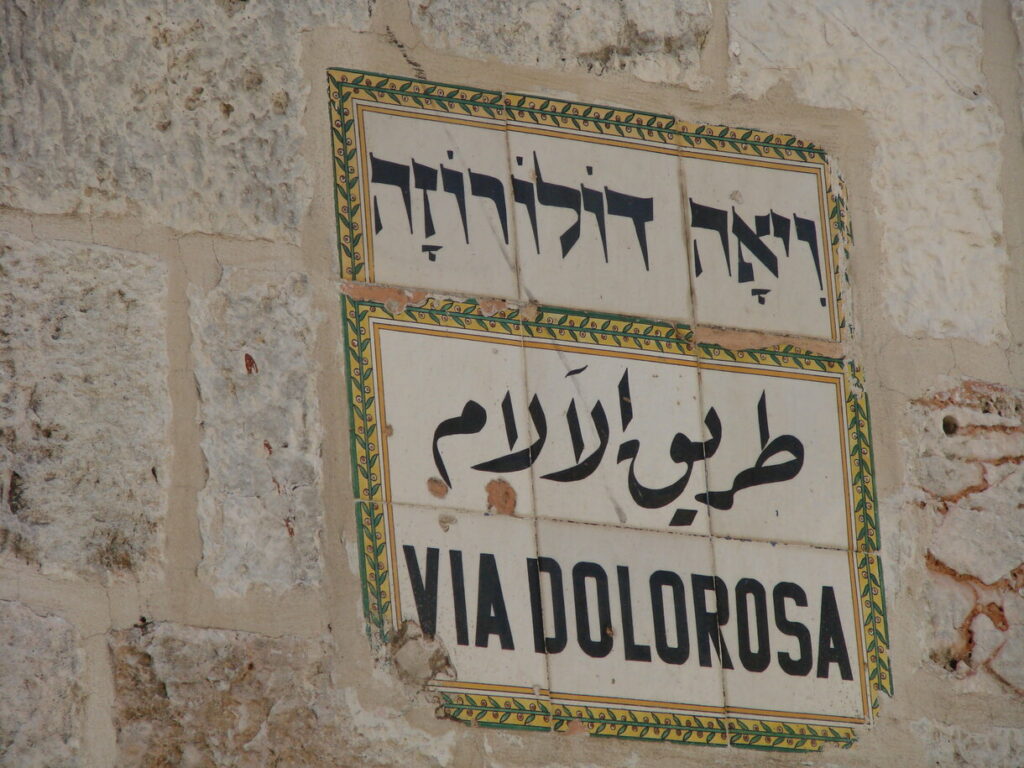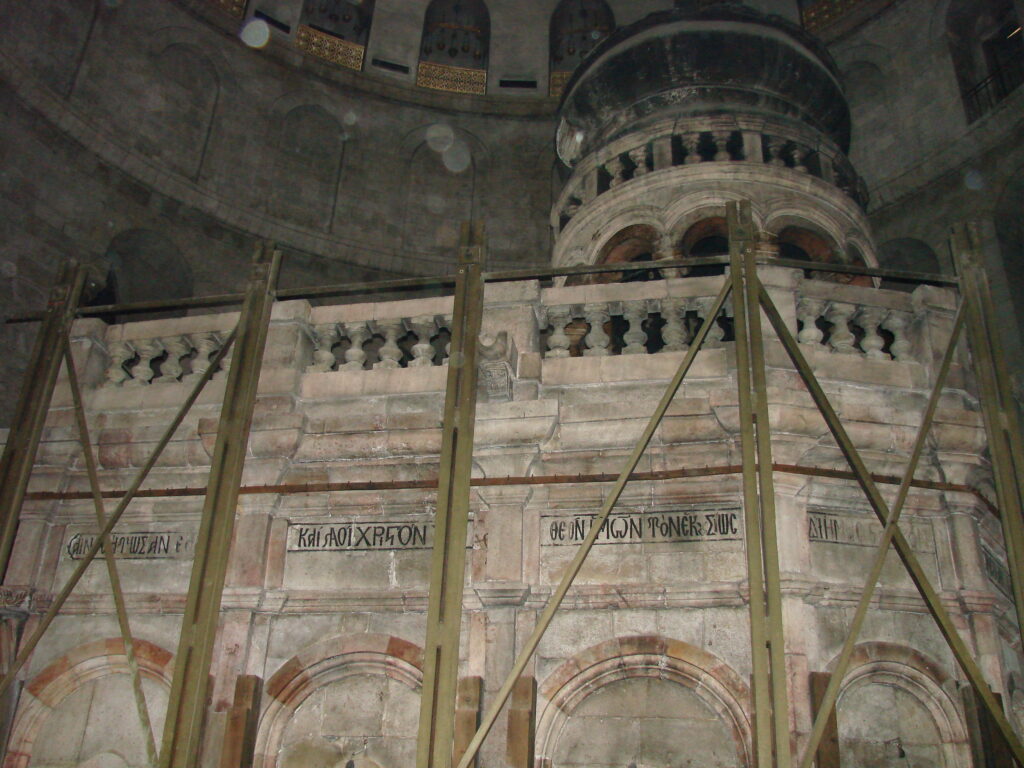Via Dolorosa: Walking the Path of Redemption
The Via Dolorosa (Way of Suffering) winds through Jerusalem’s Old City, tracing Jesus’s final journey from condemnation to crucifixion. More than just a historical route, this sacred path has been walked by pilgrims for centuries, becoming a living tapestry of devotion. The current 14-station tradition dates to 18th century Franciscans, though Christian processions here began as early as the 4th century.
The Fourteen Stations of the Cross
- Jesus is condemned to death – At the site of the Antonia Fortress (now a Muslim school)
- Jesus receives the cross – Marked by the Franciscan Chapel of Condemnation
- Jesus falls the first time – Armenian Catholic Patriarchate location
- Jesus meets His Mother – Armenian Church of Our Lady of the Spasm
- Simon of Cyrene carries the cross – Franciscan oratory at a Roman street corner
- Veronica wipes Jesus’ face – Greek Catholic Church of the Holy Face
- Jesus falls the second time – Via Dolorosa and Souq Khan al-Zeit intersection
- Jesus meets the daughters of Jerusalem – Greek Orthodox Monastery marking Luke 23:28
- Jesus falls the third time – At the Coptic Patriarchate entrance
- Jesus is stripped of His garments – Chapel of the Franks near the Holy Sepulchre entrance
- Jesus is nailed to the cross – Inside the Church of the Holy Sepulchre
- Jesus dies on the cross – Site of Golgotha in the Holy Sepulchre
- Jesus’ body is removed from the cross – The Stone of Unction
- Jesus is laid in the tomb – The Edicule shrine housing the burial chamber

Pilgrim Tip: Join the Friday Franciscan procession (3pm in winter/4pm in summer) when the Old City comes alive with hymns in multiple languages. For a quieter experience, walk the route at dawn when shopkeepers are just opening their stalls.
Church of the Holy Sepulchre: Christianity’s Beating Heart
Built by Emperor Constantine in 326 AD after his mother Helena identified the sacred sites, the Church of the Holy Sepulchre stands as Christianity’s most revered shrine. This architectural palimpsest bears layers of history:
- Byzantine foundations from Constantine’s original 4th-century church
- Crusader renovations after 1149 reconstruction
- Ottoman additions including the Status Quo decree (1757) still governing shared spaces

The church’s delicate ecumenical balance involves six Christian denominations sharing space under the 1852 Status Quo agreement. The “immovable ladder” beneath a window (in place since at least 1757) symbolizes this fragile coexistence.
“At the place where he had been crucified there was a garden, and in this garden a new tomb in which no one had yet been buried. Since it was the Jewish Day of Preparation and the tomb was nearby, they laid Jesus there.”
John 19:41-42
Visitor Experience: Prepare for sensory overload – the mingling scents of incense, the glow of countless lamps, and the murmur of prayers in dozens of languages. While queues for the Edicule (tomb shrine) can exceed two hours, many pilgrims find the shared anticipation part of the spiritual journey.

Key Areas Within the Church
- Calvary (Golgotha) – The rock of crucifixion beneath ornate Greek Orthodox altar
- Stone of Unction – Where Jesus’s body was anointed, constantly touched by pilgrims
- The Edicule – 19th-century shrine enclosing the tomb chamber
- Chapel of St. Helena – Underground where the True Cross was reportedly found
Pro Tip: Visit Wednesday evenings when the Armenian liturgy fills the church with haunting chants, or Sunday mornings for Greek Orthodox services with elaborate processions.

Leave a Reply